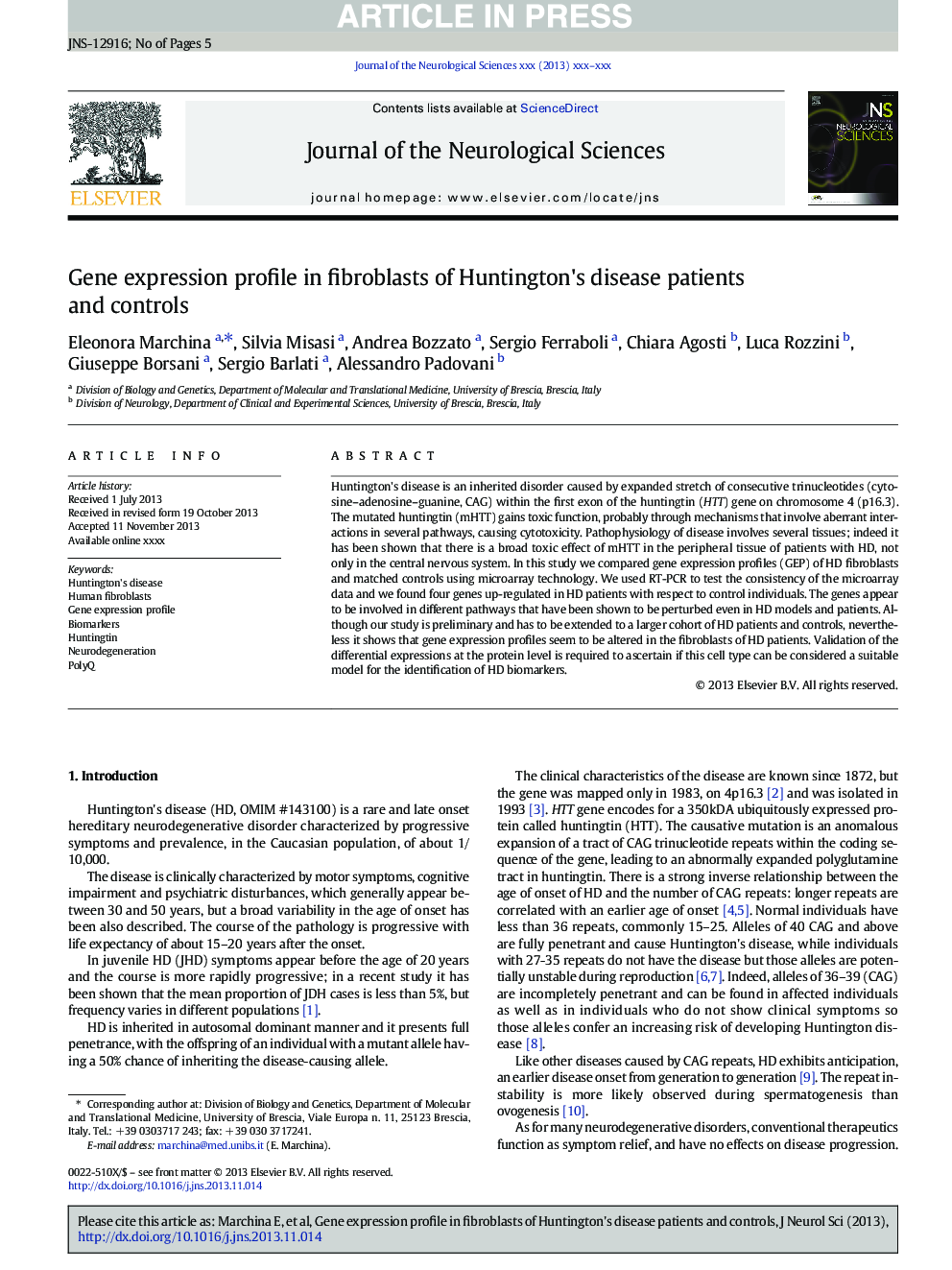| Article ID | Journal | Published Year | Pages | File Type |
|---|---|---|---|---|
| 8278004 | Journal of the Neurological Sciences | 2014 | 5 Pages |
Abstract
Huntington's disease is an inherited disorder caused by expanded stretch of consecutive trinucleotides (cytosine-adenosine-guanine, CAG) within the first exon of the huntingtin (HTT) gene on chromosome 4 (p16.3). The mutated huntingtin (mHTT) gains toxic function, probably through mechanisms that involve aberrant interactions in several pathways, causing cytotoxicity. Pathophysiology of disease involves several tissues; indeed it has been shown that there is a broad toxic effect of mHTT in the peripheral tissue of patients with HD, not only in the central nervous system. In this study we compared gene expression profiles (GEP) of HD fibroblasts and matched controls using microarray technology. We used RT-PCR to test the consistency of the microarray data and we found four genes up-regulated in HD patients with respect to control individuals. The genes appear to be involved in different pathways that have been shown to be perturbed even in HD models and patients. Although our study is preliminary and has to be extended to a larger cohort of HD patients and controls, nevertheless it shows that gene expression profiles seem to be altered in the fibroblasts of HD patients. Validation of the differential expressions at the protein level is required to ascertain if this cell type can be considered a suitable model for the identification of HD biomarkers.
Keywords
Related Topics
Life Sciences
Biochemistry, Genetics and Molecular Biology
Ageing
Authors
Eleonora Marchina, Silvia Misasi, Andrea Bozzato, Sergio Ferraboli, Chiara Agosti, Luca Rozzini, Giuseppe Borsani, Sergio Barlati, Alessandro Padovani,
